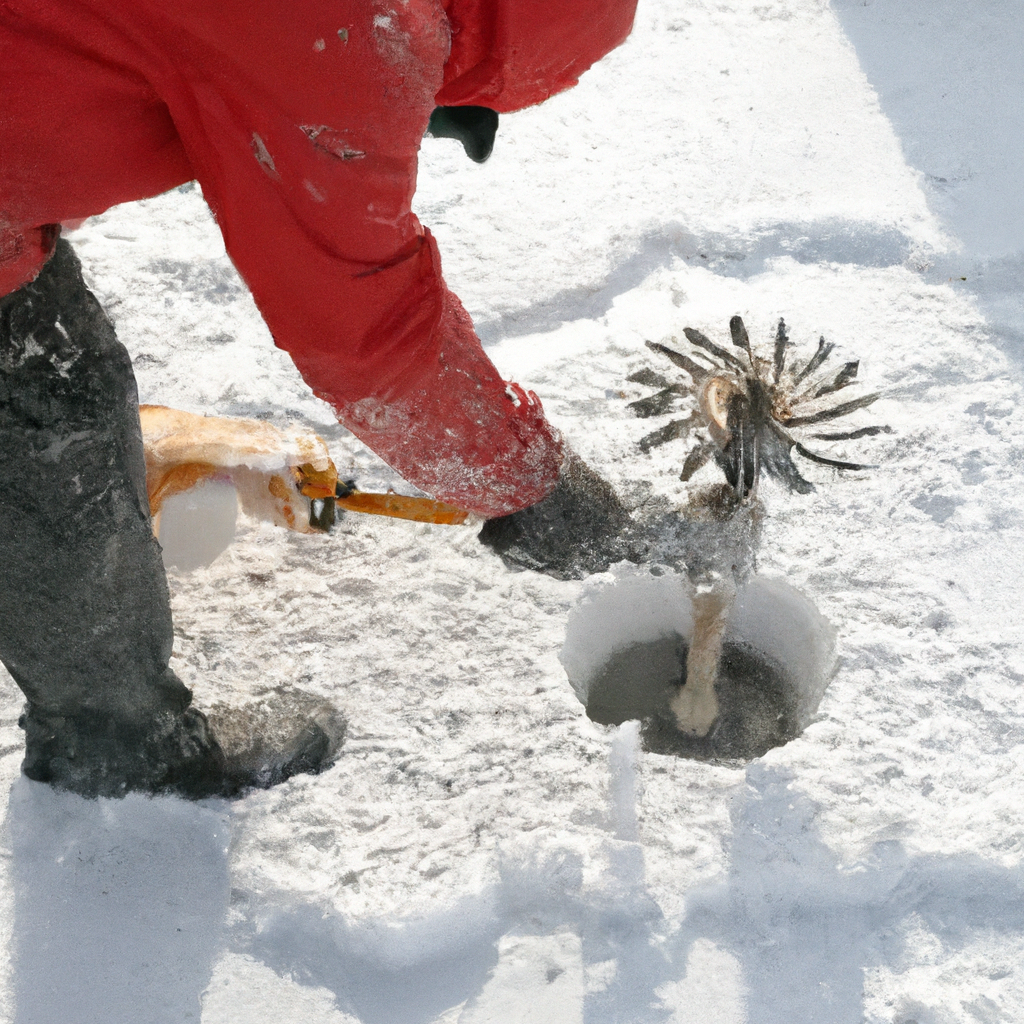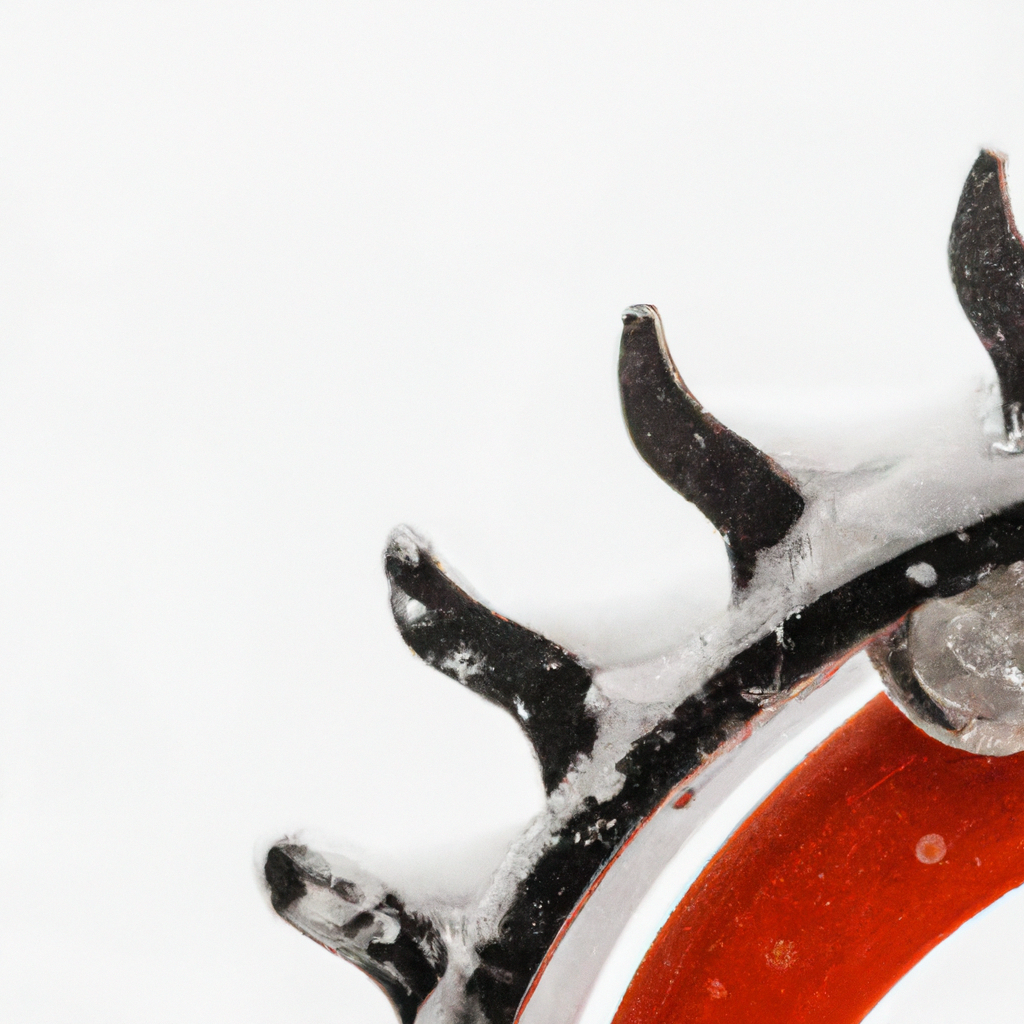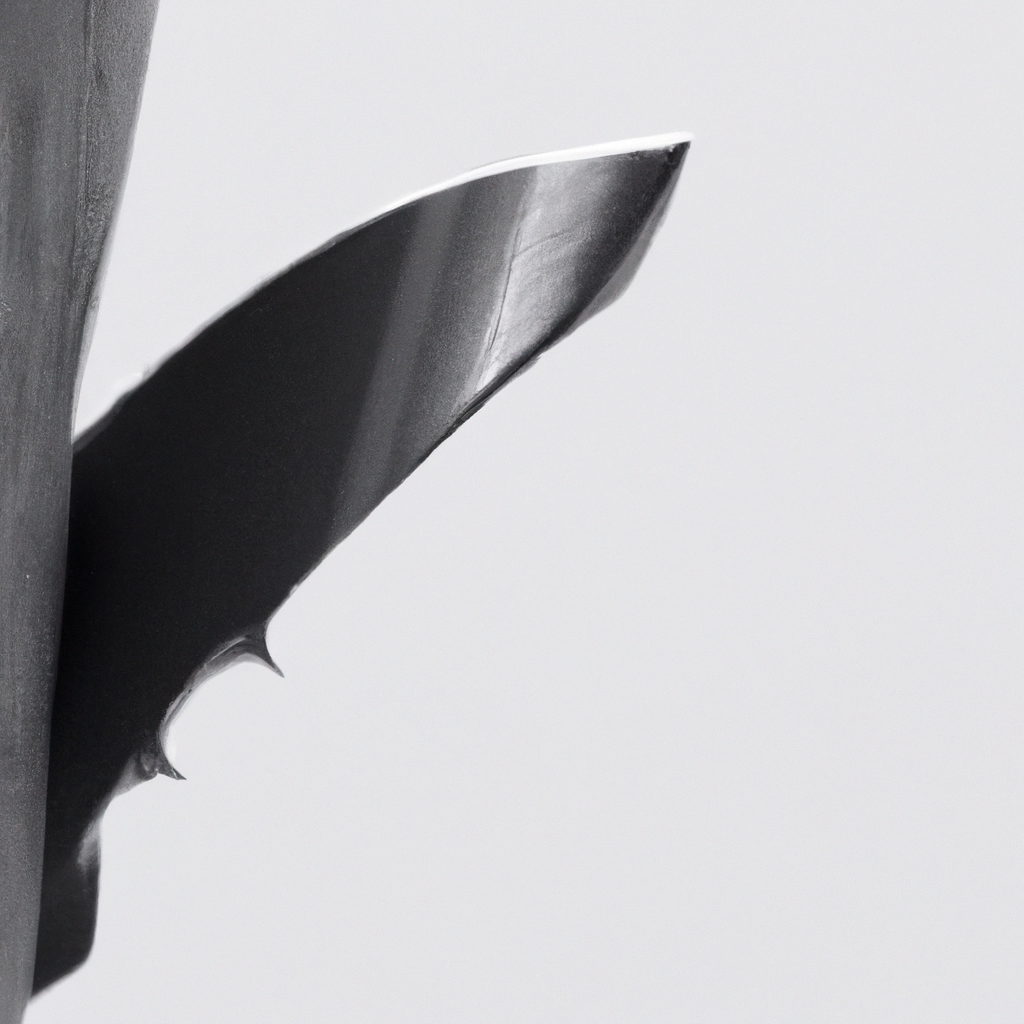So you’ve been using your snowblower for a while now, battling through the snowstorms and keeping your driveway clear. But lately, you’ve noticed that it’s not performing as well as it used to. The snow seems to be piling up rather than getting thrown out, and you’re wondering if it’s time to retire your trusty machine. Well, the answer lies in the condition of your snowblower’s auger, the crucial component that does all the heavy lifting. In this article, we’ll take you through the telltale signs that indicate your auger is worn out and needs replacement, ensuring you’re never left stranded in the snow.

Symptoms of a Worn Out Auger
When your snowblower’s auger is worn out, you may notice several symptoms that indicate a need for inspection and potential repairs. These symptoms include reduced performance, excessive vibration, strange noises, uneven snow throwing, and visible auger damage.
Reduced Performance
One of the most obvious signs of a worn-out auger is a noticeable decrease in your snowblower’s performance. The machine may struggle to effectively clear snow, requiring multiple passes over the same area or leaving behind patches of snow. If you find yourself spending more time clearing snow or experiencing difficulty moving the snowblower forward, it may be due to a worn-out auger.
Excessive Vibration
Another symptom of a worn-out auger is excessive vibration during operation. While it’s normal for a snowblower to vibrate to some extent, excessive or abnormal vibrations can indicate an issue with the auger. If you notice the snowblower vibrating more than usual, it’s essential to inspect the auger and its components for any signs of wear or damage.
Strange Noises
Unusual or strange noises coming from your snowblower while it’s in operation can be an indication of a worn-out auger. These noises can range from grinding or scraping sounds to rattling or clanking sounds. If you hear any unfamiliar sounds while using your snowblower, it’s important to stop and inspect the auger to prevent further damage or potential breakdown.
Uneven Snow Throwing
If your snowblower is throwing snow in an uneven or inconsistent pattern, it could be a sign of a worn-out auger. A properly functioning auger should evenly distribute the snow as it throws it out of the chute. However, if you notice clumping, clogging, or uneven snow distribution, it may indicate a problem with the auger blades or other components.
Auger Damage
Visible damage to the auger itself is a clear indication of wear and tear. Inspect the auger closely for signs of cracks, chips, or bending. Additionally, if the auger blades are worn down, broken, or missing, it’s a strong indication that the auger needs attention and potential replacement.
Inspecting the Auger
Regular inspections are crucial to identify any issues with your snowblower’s auger. By inspecting the different components, you can catch any signs of wear and tear early on, preventing further damage and ensuring optimal performance. Here are the key components to inspect:
Checking the Blades
Start by examining the auger blades. Look for any signs of damage, such as chipping or bending. If the blades appear dull or worn, it may be time to replace them. It’s essential to have sharp and intact blades for efficient snow removal.
Examining the Gearbox
Inspect the gearbox for any leaks or signs of rust. Make sure all the gears are in good condition and properly lubricated. A damaged or rusty gearbox can affect the auger’s performance and potentially lead to further damage if not addressed.
Inspecting the Housing
Take a close look at the auger housing for any cracks, dents, or other signs of damage. The housing should be intact and free from any deformities that may impact the auger’s functionality. Repairs or replacement may be necessary if the housing is compromised.
Analyzing the Belt
Check the belt that connects the auger to the engine. Look for any signs of wear or damage, such as fraying or stretching. A loose or damaged belt can significantly impact the auger’s performance, so repair or replacement may be required.
Looking for Shear Pin Damage
Inspect the shear pins that secure the auger blades to the auger shaft. If any pins are missing or visibly damaged, they should be replaced immediately. Shear pins are designed to break under stress, protecting the auger from more severe damage.
Measuring Auger Blade Height
Proper blade height is essential for optimal snowblower performance. If the blades are set too low, they may not effectively scoop up the snow, while blades set too high may not engage properly. Measuring and adjusting the blade height is a straightforward process.
Using a Tape Measure
With the snowblower turned off and the blades disengaged, measure the blade height from the ground to the bottom edge of the blade. Use a tape measure and ensure the measurement is accurate to determine if the blades are set at the recommended height.
Comparing to Recommended Height
Refer to the snowblower’s user manual or manufacturer’s guidelines to find the recommended blade height. Compare the measured height to this recommended height to determine if any adjustments are necessary.
Adjusting Blade Height
If the blade height is not within the recommended range, make the necessary adjustments to raise or lower the blades. Follow the manufacturer’s instructions to safely adjust the blade height. Properly adjusted blades ensure efficient snow removal and reduce strain on the auger and other components.

Signs of Auger Wear and Tear
Recognizing the signs of auger wear and tear is crucial in addressing potential issues before they escalate. By being aware of these signs, you can take appropriate action to repair or replace worn-out auger components.
Worn or Damaged Blades
Blades that appear worn, chipped, or bent are clear indicators of wear and tear. Worn-out blades can significantly impact the snowblower’s performance, leading to reduced efficiency and potentially causing further damage to the auger or other components.
Rusted or Broken Gearbox
A rusty or broken gearbox is a sign of significant wear and tear. Rust indicates moisture infiltration, which can lead to corrosion and potential gear failure. A broken gearbox requires immediate attention as it can cause the auger to malfunction or even seize up.
Cracked or Dented Housing
Cracks or dents in the auger housing compromise its structural integrity. This can lead to misalignment of the auger blades or cause debris to enter critical components, resulting in damage. Any noticeable cracks or dents should be addressed promptly to ensure safe and efficient operation.
Loose or Damaged Belt
A loose or damaged auger belt can cause the auger to slip or not engage properly. This can result in reduced snow clearing performance and potential damage to the belt or other components. Inspect the belt for signs of wear or damage, such as fraying or stretching, and replace if necessary.
Missing or Damaged Shear Pins
Shear pins are designed to break under stress to protect the auger from severe damage. If any shear pins are missing or visibly damaged, immediate replacement is necessary. Operating the snowblower without shear pins can lead to costly damage to the auger or other components.
Preventing Excessive Auger Wear
Taking proactive steps to prevent excessive auger wear is key to ensuring the longevity and optimal performance of your snowblower. By following a few maintenance and operational practices, you can minimize wear and tear on the auger.
Regular Maintenance
Perform regular maintenance tasks recommended by the snowblower’s manufacturer. This includes engine oil changes, lubrication of moving parts, and checking for any loose or worn components. Regular maintenance helps identify issues early on and prevents them from escalating into more significant problems.
Proper Operation
Operate the snowblower according to the manufacturer’s instructions. Avoid overloading the machine or forcing it to clear snow beyond its capabilities. Operating the snowblower within its designated capacity helps prevent strain on the auger and other components, reducing wear and tear.
Removing Debris
Clear any debris, such as rocks, sticks, or ice chunks, from the snowblower’s path before operation. These objects can become lodged in the auger and cause damage. Removing debris reduces the risk of auger wear and prolongs the lifespan of the components.
Avoiding Obstacles
Avoid operating the snowblower over uneven terrain or near fixed objects, such as curbs or walls. Prolonged contact with obstacles can cause the auger to strike them, leading to damage or misalignment. Pay attention to the terrain and adjust your snow removal technique accordingly to prevent unnecessary wear on the auger.
Correct Storage
When not in use, store the snowblower in a dry and clean area. Moisture and exposure to the elements can accelerate wear and rust on the auger and other components. Proper storage helps maintain the snowblower’s condition and prevents premature wear.
Repair or Replace?
Determining whether to repair or replace a worn-out auger depends on several factors, including the extent of the damage, cost considerations, and your skills and preferences as a DIYer.
Consulting a Professional
If you’re unsure about the severity of the auger wear or don’t have the necessary skills, it’s best to consult a professional snowblower repair technician. They can thoroughly assess the auger and its components, provide an accurate diagnosis, and recommend the most appropriate course of action.
Assessing the Damage
Consider the extent of the damage and how it affects the overall performance and safety of the snowblower. Minor wear, such as dull blades or a loose belt, can often be addressed through repairs. However, severe damage, such as a cracked housing or broken gearbox, may require replacing the affected components or even replacing the entire auger assembly.
Cost Considerations
Evaluate the cost of repairing versus replacing the worn-out auger. Depending on the extent of the damage, repairs can be a cost-effective solution. However, if the repair costs approach or exceed the cost of a new auger or snowblower, it may be more economical to opt for replacement.
DIY Repair vs. Replacement
Consider your own skills, experience, and comfort level with DIY repairs. Simple maintenance tasks like replacing shear pins or adjusting blade height can often be done by the average homeowner. However, more complex repairs or component replacements may require specialized tools or expertise. Assess your abilities and factor in the time and effort required for the repair before deciding on a DIY repair or replacement.
Safety First
When working on a snowblower’s auger, it’s essential to prioritize safety to prevent accidents and injuries. Follow these safety precautions to ensure a safe working environment.
Shut Off the Snowblower
Before performing any maintenance or inspection, always turn off the snowblower and remove the key, if applicable. This prevents accidental starting or engagement of the auger blades.
Wear Protective Gear
Wear appropriate protective gear, such as safety goggles, gloves, and sturdy footwear. Protective gear helps guard against flying debris and potential injuries during auger inspection and repair.
Disconnect the Spark Plug
To prevent accidental engine start-up, disconnect the spark plug wire before working on the snowblower. This eliminates the risk of the engine firing while you’re inspecting or repairing the auger.
Follow Manufacturer’s Instructions
Read and follow the snowblower’s user manual and the manufacturer’s instructions for safe maintenance and repair procedures. Each snowblower can have specific safety guidelines and steps to follow, so it’s crucial to familiarize yourself with the manufacturer’s recommendations.
Proceed with Caution
Take your time and proceed cautiously when inspecting or working on the auger. Avoid rushing or forcing components, as this can lead to accidents or further damage. Working carefully and attentively minimizes safety risks and ensures proper repairs or adjustments.
Common FAQ
Here are some frequently asked questions regarding worn-out augers and their answers:
How long does an auger typically last?
The lifespan of an auger can vary depending on various factors such as usage frequency, maintenance, and operating conditions. On average, a well-maintained auger can last anywhere from 5 to 10 years before requiring significant repairs or replacement.
Can I continue using my snowblower with a worn-out auger?
While it is possible to continue using a snowblower with a worn-out auger, it is not recommended. A worn-out auger can lead to reduced performance, further damage to components, and even safety hazards. It’s best to inspect and address any issues with the auger promptly to ensure efficient and safe snow removal.
Can I sharpen the auger blades?
Auger blades can be sharpened if they are dull but otherwise in good condition. Use a file or a grinder to remove any nicks or dull edges, ensuring a sharp cutting edge. However, if the blades are already significantly worn, chipped, or bent, it’s recommended to replace them rather than attempting to sharpen them.
How much does it cost to replace an auger?
The cost of replacing an auger can vary depending on the make and model of the snowblower, as well as the specific components that need replacement. Auger replacement costs typically range from $100 to $500, with additional expenses if professional labor is required.
Can I replace just the damaged parts of the auger?
In some cases, it is possible to replace only the damaged components of the auger. For example, if the blades are worn or damaged, they can be replaced individually. However, for more severe damage such as a cracked housing or broken gearbox, it may be more practical and cost-effective to replace the entire auger assembly.
Conclusion
Regular inspection and maintenance of your snowblower’s auger are vital in ensuring optimal performance and preventing further damage. By paying attention to the symptoms of a worn-out auger and conducting thorough inspections, you can identify any issues early on and take the necessary steps to repair or replace worn-out components.
Remember, safety should always be a priority when working on the auger or any other part of the snowblower. Follow the manufacturer’s instructions, wear appropriate protective gear, and proceed with caution.
By prioritizing maintenance, avoiding excessive wear and tear, and addressing any issues promptly, you can prolong the lifespan of your snowblower’s auger and enjoy efficient and reliable snow removal season after season.





